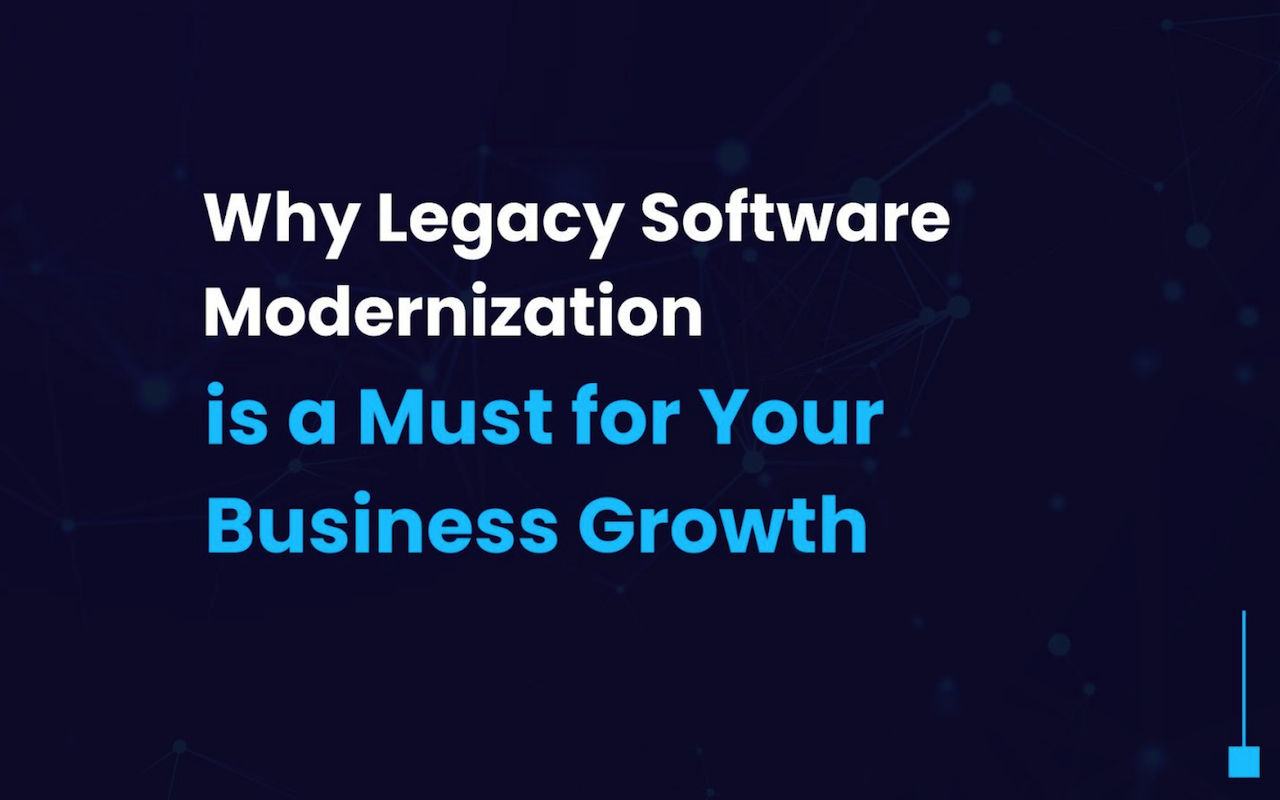
In a world when technology gives businesses an edge over their competitors, sticking with old methods might slowly stop your organization from growing. Legacy software might still work, but it often masks growing issues with security, performance, and integration that make innovation more difficult. If your business wants to future-proof its processes, ensure a smooth user experience, and grow with confidence, modernizing outdated software is no longer just a nice-to-have; it’s a strategic necessity.
What is Legacy Software?
Legacy software refers to software, systems, or platforms that are no longer up to date with the latest technology or business needs. These systems might use archaic programming languages, depend on out-of-date infrastructure, or fail to work with new APIs and cloud platforms. They're popular in fields like finance, healthcare, and manufacturing. These are the same fields that used to spend a lot of money on custom-built software years ago and are now paying the price for technical debt.
If you see any of these signs, your software may be a legacy liability:
- Frequent crashes or extended periods of downtime
- Inability to work with contemporary applications or cloud services
- Security concerns due to outdated code or lack of regular updates
- Difficulty finding developers familiar with the old technology stack
- User frustration caused by poor performance and clunky interfaces
The Dangers of Keeping Old Systems
Even though older systems may seem reliable, they might have a lot of hidden costs. This is how old software slowly hurts growth:
1. Security Holes
Most of the time, old software doesn't have the strong security architecture needed to guard against today's cyber attacks. Platforms that aren't supported don't get security updates, which makes them easy targets for breaches, ransomware, and violations of compliance.
2. Maintenance Costs Are High
As hardware breaks down and qualified engineers become harder to find, it costs more and more to keep outdated systems running. IT teams spend too much time fixing issues instead of coming up with new ideas.
3. Limited Scalability
Businesses now require infrastructure that can grow with them and change to meet the needs of their customers. Most of the time, legacy systems aren't constructed to manage flexible scaling or new service models.
4. Problems with Integration
APIs are the backbone of today’s software ecosystem. Legacy systems often lack APIs or require custom workarounds to connect with modern applications, which can hinder workflow efficiency and slow down innovation.
5. Bad User Experience
Customers and staff both want digital experiences that are quick and easy to use. Older interfaces are frequently slow and clumsy, which makes people less interested and costs them time and money.
The Advantages of Modernizing Legacy Software for Businesses
Updating old software doesn't merely get rid of problems; it also makes it possible for strategic change to happen. Here's how:
- Better Performance: Modern apps use streamlined, efficient codebases that enable faster response times and make user interaction more seamless.
- Better Security and Compliance: Newer systems include built-in security safeguards and are designed to meet evolving legal standards, such as GDPR and HIPAA, reducing the risk of legal issues.
- Ability to Grow and Change: With cloud-native design and modular platforms, your organization can grow, add new features, and change direction quickly without having to start over.
- More Seamless Integration: Modern systems feature robust API frameworks that simplify integration with third-party solutions, CRMs, ERPs, and analytics tools.
- Make Customers and Employees Happier: Having clean interfaces, faster workflows, and access from any device can significantly improve customer engagement and employee productivity.
Strategic Reasons for Modernization
Modernization is more than just upgrading technology; it’s a shift in how a business operates, aligning it with broader market forces.
- Customer Expectations: People today expect seamless digital interactions across all platforms.
- Competitive Pressure: Startups that know a lot about technology don't have to deal with old systems and can move faster.
- Remote and Hybrid Work Models: Teams need safe, cloud-based technologies so they can work together from anywhere.
- Making Decisions Based on Data: Modern tools give you real-time insights and comprehensive analytics.
What Are Your Options for Modernization?
There isn't a single way to modernize. The ideal option for you will rely on your business goals, budget, and technological limits.
- Rehosting (Lift and Shift): This means moving your current app to the cloud with as few changes as possible. This approach is the quickest and least disruptive.
- Refactoring: Improve the efficiency, maintainability, or cloud compatibility of current code without changing how it works.
- Rearchitecting: Change the system's architecture so that it can better use cloud services or microservices frameworks.
- Rebuilding: Use contemporary technologies and best practices to completely redesign the program. This requires more investment but delivers the greatest improvement.
- Replacing: Get rid of the old system and switch to a new commercial or SaaS product that matches your needs.
How to Make a Good Plan for Modernization
A well-thought-out modernization roadmap lowers risk and raises ROI. To get started, do the following:
- Check Your Current Systems: Review your software inventory to identify performance issues, security vulnerabilities, and integration limitations.
- Align With Business Goals: Ensure that your modernization strategy supports key business objectives—whether it’s expanding into new markets, improving customer experience, or streamlining operations.
- Pick the Best Modernization Path: Evaluate options such as rehosting, refactoring, or rebuilding. Choose the approach that best fits your timeline, budget, and priorities.
- Get Stakeholders on Board: Make sure both IT and business leaders are on board. Ensure that departments know how important the change is and are ready for it.
- Work With Experienced Partners: Collaborate with a team that has proven expertise in legacy system modernization. Their technical insight can help you avoid common pitfalls.
Real-World Examples
Case Study 1
A financial services company moved its 20-year-old mainframe system to a cloud-native microservices architecture.
Result: 60% reduction in operating costs and a 3x increase in deployment speed.
Case Study 2
A healthcare provider updated their patient management software to meet HIPAA standards and integrate with telemedicine platforms.
Result: Improved data security and a 40% faster appointment scheduling process.
Conclusion
In today’s fast-paced digital economy, old software isn’t just inconvenient—it holds back growth, innovation, and customer satisfaction. Partnering with a legacy software modernization company can help your business upgrade outdated systems to meet market demands, attract top talent, and deliver outstanding customer experiences. The longer you delay, the higher the cost—both financially and strategically.
 FAQs
FAQs
It's time to think about modernizing your software if it's hard to keep up with, doesn't work with new tools, or doesn't satisfy performance or security standards.
Not all the time. Modernization is the best option if your present system is still useful but needs improvements. When essential functions are out of date, it makes sense to replace everything.
It depends on how hard it is. Rehosting can take a few weeks, but rebuilding can take a few months.
Disruptions can be kept to a minimum with careful planning and gradual rollouts. To avoid downtime, many organizations update slowly.
Look for a team with a proven track record modernizing legacy software, deep knowledge of your industry, and a collaborative approach to getting things done.
Share this post
Leave a comment
All comments are moderated. Spammy and bot submitted comments are deleted. Please submit the comments that are helpful to others, and we'll approve your comments. A comment that includes outbound link will only be approved if the content is relevant to the topic, and has some value to our readers.

Comments (0)
No comment